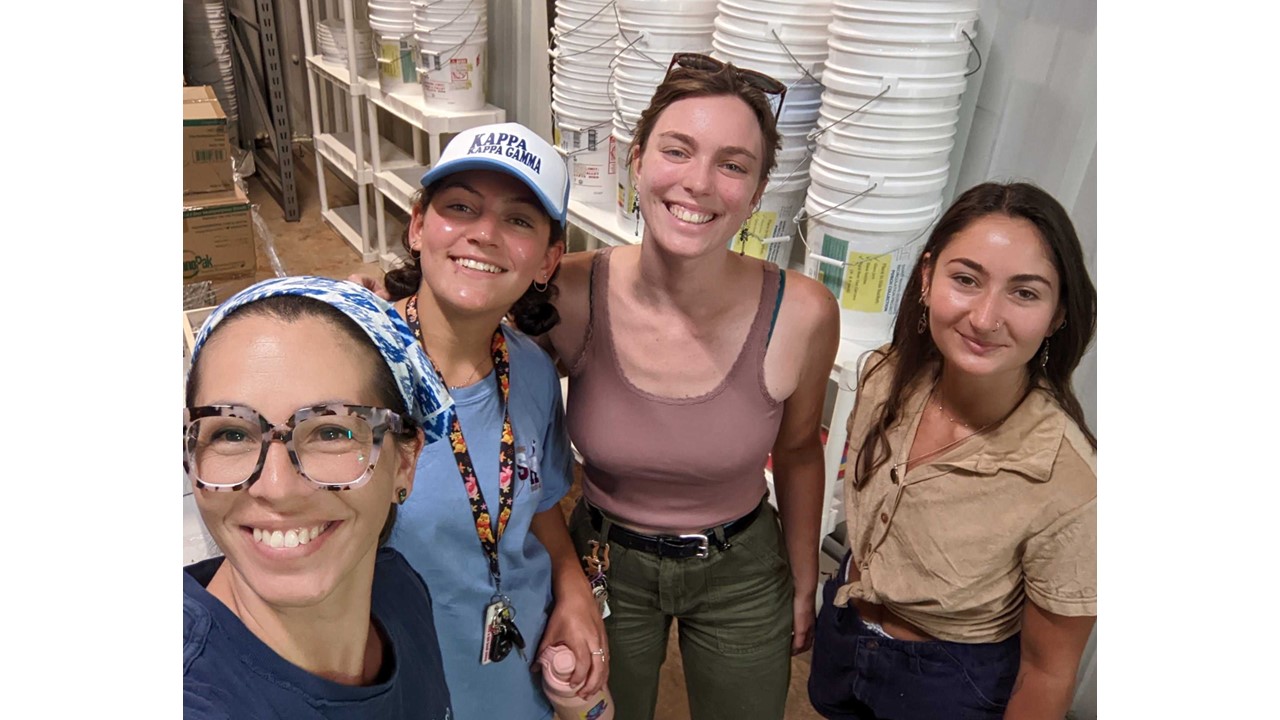
It has become the norm for consumers and producers to adopt an “out of sight, out of mind” mentality when it comes to single-use packaging waste. But for local governments, waste and what to do with it is certainly top of mind.
But what if packaging weren’t trash? What if it were made durably to be recirculated and reused? Cities like Seattle and Ann Arbor are adopting municipality-wide reuse systems, a concept that can and should scale globally, not only to mitigate single-use waste’s environmental and health consequences, but because it offers a huge opportunity for city/county managers and their communities.
At Upstream, a nonprofit leading change agency for the reuse movement, we’ve spent many years showing how reuse is a win for the environment,saves businesses and communities money, and catalyzes thriving local economies. Reuse stimulates job and workforce development, can add stable revenue streams to the struggling recycling industry, and reduces budget spent on waste disposal — all while helping local government leaders become sustainability heroes in their communities.
One of the biggest challenges of reuse involves establishing a reuse system that’s as simple as garbage. During my time as CEO of Don’t Waste Durham, we conducted a three-year study, The ReCirculation Project, in Durham, North Carolina, USA, that examined the feasibility of a shared, interoperable system for reuse and recycling. The hypothesis: the existing infrastructure of the recycling industry could facilitate a societal shift to adopting more reusable packaging by providing a system that is as easy as rolling your reusables to the curb, just like trash and recycling.
Phase 1: Partnering to Prove that It Could Work
We knew from the start that co-mingling returnable, reusable packaging with recyclables is without a doubt fraught with problems, but Phase 1 of the project was to begin to build the first small proof of concept — that reusable packaging could arrive at the material recovery facility (MRF) and be sorted off the line. Don’t Waste Durham formed a partnership with the city of Durham’s solid waste management department, the Sonoco recycling corporation, and three tech companies to test the concept, identify a comprehensive list of challenges, and ideate creative solutions together.
What they found is that reusable containers placed into residential recycling bins on the street can be successfully picked up by recycling haulers, arrive at the recycling facility, dumped into the hopper, and then tracked, sorted, and recovered off the conveyor belts. The containers were tagged with radio frequency identification (RFID), and an RFID scanner was mounted on the conveyor belt. The results proved that using technology (like RFID or optical sorting) and innovation can surmount many of the challenges with shifting to a new system, as well as the fact that leveraging partnerships between public and private organizations in the community can increase your success rate.
Katie Hunt, reuse hub program manager in Durham’s department of solid waste management, expressed the city’s gratitude. “We appreciate the efforts of community partners (like Don’t Waste Durham through their ReCirculation Project) to show city/county managers, residents, and visitors how to better use what they’ve got. The city of Durham has launched a Reuse Hub initiative aimed at catalyzing a local circular economy through strategies that keep materials, products, and components in use at their highest value rather than going to waste. The goal of this new initiative is to show that with enough time and commitment, we can divert waste from disposal, which is good for the planet, our communities, and the bottom line.”
Phase 2: Economic Analysis
In Phase 2, we wanted to look specifically at the economics of integrating reuse into recycling systems and conducted a value chain analysis in partnership with a waste economist and Duke University. This analysis concluded that it is profitable for recycling companies to recover and redistribute durable packaging back to retailers, producers, and manufacturers, as long as the volume of the materials collected is at a certain threshold or above. Most notably, the city stands to benefit under an all-reusables scenario by receiving 100% of the revenues generated. While the city yields a net-positive cash flow in any scenario, it stands to be the greatest under the 100% reusables scenario.
Phase 3: Simulation and Resident Reception
In the third and final phase of The ReCirculation Project, Don’t Waste Durham wanted to assess the volume of reusable packaging that could be circulated back by residential households, gauge public interest in city-wide residential pickup of reusable glass packaging, and measure the potential cost savings for businesses and carbon emission reduction. We simulated the work of a recycling hauling company and a MRF by picking up glass jars, glass bottles, and plastic can carriers from five areas of Durham over a period of eight weeks, sorting them at their facility, and then identifying end markets to which they could sell the packaging back to local producers and manufacturers.
Our conclusions were that volume can be achieved and that residents wanted glass packaging to have more lives beyond one use. We found that many opportunities exist to create a more equitable economy and stimulate workforce development through hyperlocal, local, and regional circulation of resources, instead of shipping in virgin materials to be used only once. The environmental benefits were also clear. We projected that municipal solid waste services would have emitted 5 tons of CO2e in collecting the same items during the same span of time, whereas The ReCirculation Project curbside collection emitted only 355 pounds of CO2e—saving 4.5 tons in transportation emissions during this small 10-week project alone.
Conclusion
At Upstream, we feel that it is important for communities to examine whether the recycling industry could grow its impact and gain stable revenue streams by enhancing their existing services to include reuse. The status quo has been mitigation — the landfilling or incineration of trash and sorting, baling, and selling recyclables. But what if local government waste management included prevention as well as mitigation? As we continue to examine how recycling and reuse might work as one to be a stronger solution together, we encourage city/county managers to innovate and evolve legacy ideas of solid waste management. Get involved with the burgeoning reuse industry, and see how it can help you efficiently meet sustainability goals and help your communities thrive.
A great place for local governments to start is Upstream’s Reuse for Onsite Dining Library.

CRYSTAL DREISBACH is a reuse pioneer whose life goal is to disrupt the status quo of our throw-away economy. She is in her fourteenth year of creating solutions that move our society away from single-use and joined Upstream as their new CEO in 2023. Upstream (upstreamsolutions.org) is a U.S.-based nonprofit and leading change agency for the reuse movement in the United States and Canada. They accelerate the transition from our current throw-away economy to one that is regenerative, circular, and equitable by normalizing reuse, growing and supporting the reuse industry, and creating an enabling policy environment for reuse.
New, Reduced Membership Dues
A new, reduced dues rate is available for CAOs/ACAOs, along with additional discounts for those in smaller communities, has been implemented. Learn more and be sure to join or renew today!
